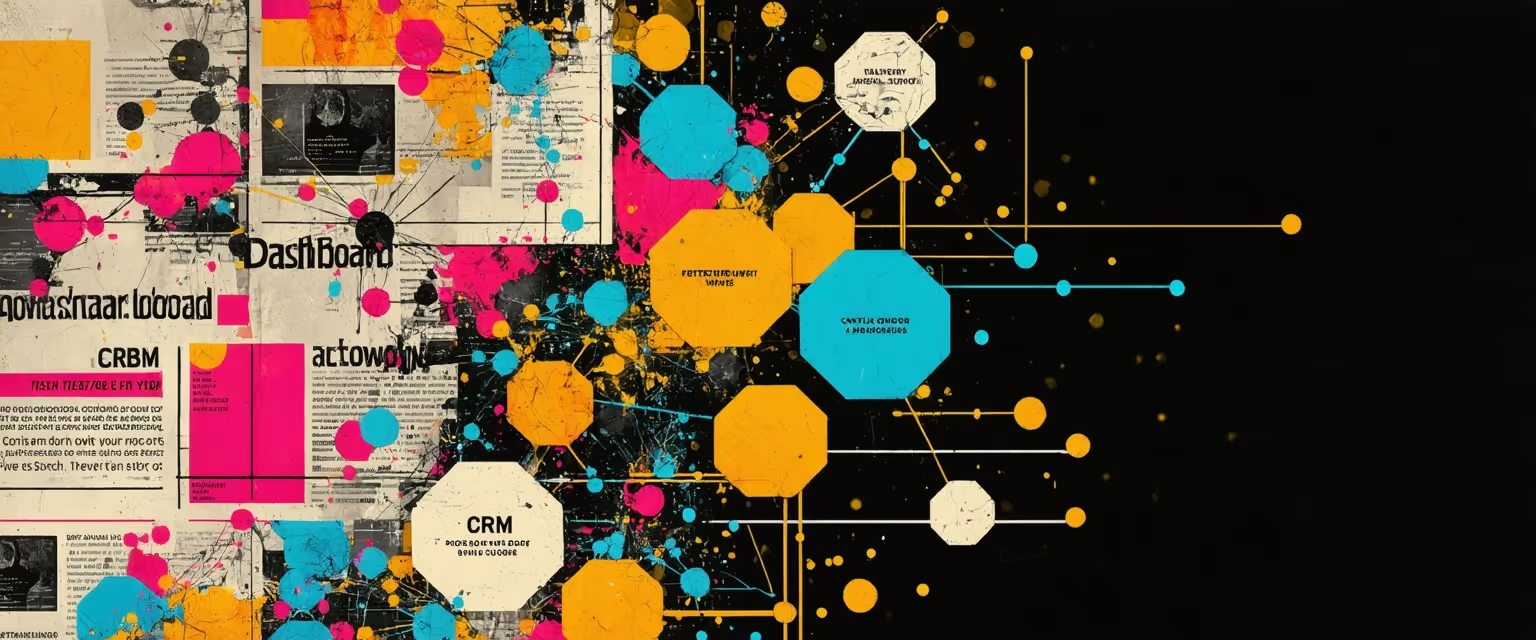Discover how Datagrid’s Agentic AI streamlines claims forms comparison, automates data integration, and enhances accuracy—helping insurance organizations achieve reliability and efficiency.
Learning how to automate claims forms comparison is becoming increasingly essential for insurance organizations seeking greater efficiency and accuracy. Many businesses grapple with the complexities of handling diverse datasets, which often results in delays and inefficiencies.
Fortunately, the rise of Agentic AI capabilities is revolutionizing how we approach these issues by providing advanced data connectors that streamline data management processes. This article will explore the power of data connectors and demonstrate how these innovative tools are transforming data integration into a more efficient and user-friendly experience.
Understanding Claims Forms Comparison
Claims forms comparison is a pivotal process in the insurance sector, crucial for ensuring accuracy, efficiency, and fairness in handling claims. This process involves:
- Examining different claims submitted by policyholders to identify inconsistencies,
- Verifying coverage details,
- Assess eligibility for compensation.
It serves as a fundamental step in the decision-making process, influencing both the insurer's financial outcomes and the satisfaction of various stakeholders involved, including policyholders and regulatory bodies.
Traditional forms, often paper-based or stored in disparate digital systems, require significant manual input for cross-verification against policy terms and historical data. This slows down the claims processing timelineand increases the risk of inaccurate settlements and heightened customer dissatisfaction.
Compounding these challenges is the need for adherence to industry-standard processes, which demand meticulous review and documentation. Adopting standardized practices often involves a rigorous alignment with complex regulatory requirements, necessitating detailed audits and checks that can further slow down the processing speed.
The variability in forms used by different insurers and the absence of a unified data management system can lead to prolonged processing times and disputes over claims authenticity. The shift towards more digitized, automated claims processing solutions attempts to address these shortcomings by providing streamlined, accurate, and swift claims management.
Through the integration of digital comparison tools, insurers can:
- Automate much of the verification and validation of claims data
- Minimize the time required for processing
- Maintain compliance with industry best practices
This not only enhances decision-making accuracy but also fosters improved stakeholder satisfaction by providing faster and more transparent service experiences.
Challenges of Manual Claims Forms Comparison
Manual claims form comparison presents significant challenges with real-world impacts on efficiency and costs. A major issue is time consumption—sifting through extensive paperwork is slow and labor-intensive, creating workflow bottlenecks. This becomes especially taxing with high claim volumes, where prompt processing is critical for customer satisfaction and compliance.
Error rates present another critical challenge. Human error is inevitable in tasks that involve manual data entry and comparison. Mistakes such as misreported data, overlooked discrepancies, or incorrect reconciliations are common and can lead to severe repercussions, including financial losses and legal penalties.
To reduce these errors, it's important to automate data validation, which minimizes human error and improves overall accuracy.
Introduction to AI and Automation Technologies
Artificial Intelligence (AI) and machine learning enable systems to learn from data, identify patterns, and make decisions, which significantly enhances productivity and efficiency. Among the plethora of applications, AI's capabilities in automated data integration, data extraction, document analysis, and cross-referencing are particularly transformative. For example, AI can assist in mining PDF data and extracting critical information from unstructured documents.
Data Extraction and Document Analysis
AI's prowess in data extraction involves sifting through large volumes of information to retrieve relevant data, which is crucial for businesses that handle extensive datasets, as in insurance data extraction.
By employing natural language processing (NLP) and computer vision, AI can assess and interpret document content, enabling automated understanding and categorization. These capabilities speed up information processing, reduce human error, and lead to more reliable data handling.
Datagrid leverages AI algorithms to efficiently manage data operations, offering features such as automated data entry and seamless integration with various tools. Datagrid can cross-reference information across different datasets, providing a coherent and comprehensive view of available data. This greatly aids decision-making processes within organizations by ensuring that insights are drawn from the most accurate and complete sets of information.
Setting Up an Automated System
Implementing an automated system can significantly enhance efficiency and productivity in your organization. However, it's crucial to follow a structured process to ensure a seamless transition. Here's a comprehensive guide to setting up an automated system tailored to your organization's needs.
1. Understand Existing Workflows
Before diving into automation, take a step back to evaluate your current workflows. This understanding is pivotal, as it allows you to identify processes that benefit most from automation and those that do not. Analyze tasks that are repetitive, time-consuming, or prone to human error, as automating these can yield the greatest return on investment.
2. Evaluate and Choose Technology Solutions
Selecting the right technology is vital for a successful automation setup. Keep the following in mind:
- Assess Needs: Identify the specific needs of your organization and match them with technology solutions that address these requirements.
- Research Options: Consider various software and tools available in the market. Review features, compatibility, scalability, and cost-effectiveness.
- Vendor Assessment: Evaluate vendors based on their product offerings, customer support, and track record. Opt for a supplier that aligns with your industry standards.
3. Integrate with Existing Systems
Seamless integration with existing systems is crucial to avoid disruptions.
- Identify Critical Systems: Determine which existing systems you need to integrate with the new automation tools.
- Ensure Compatibility: Verify that the chosen automation tools are compatible with your current systems.
- Plan for Data Migration: Ensure data integrity by planning an effective data migration strategy.
4. Customize for Industry-Specific Needs
Different industries have unique requirements, necessitating customization:
- Identify Specific Requirements: Work with stakeholders to identify customization needs specific to your industry.
- Work with Developers: Collaborate with developers or technology partners to tailor the automation system to fit these requirements.
- Test Custom Features: Conduct thorough testing of custom features to ensure they function as intended and enhance rather than hinder workflows.
5. Deploy and Test the Automation System
Deployment is a crucial phase that requires careful planning and execution:
- Pilot Testing: Conduct a pilot test within a restricted scope to identify any issues and gather initial feedback.
- Iterate Based on Feedback: Use the feedback to make necessary adjustments before a broader rollout.
- Training and Support: Provide training sessions to ensure users understand how to utilize the new system effectively. Offer ongoing support to address any post-deployment challenges.
Consult with Tech Professionals
Complex integrations and customizations often necessitate expertise beyond internal capabilities. Consider consulting with technology professionals to:
- Ensure Best Practices: Gain insights and recommendations on best practices for setting up and deploying automated systems.
- Troubleshoot Issues: Rely on experts to troubleshoot any technical issues that arise during the implementation phase.
- Optimize System Performance: Work with professionals to optimize the system for maximum efficiency and effectiveness.
By following these steps, you can successfully implement an automated system that enhances productivity, accuracy, and workflow efficiency. Keep in mind that although automation offers significant benefits, it requires thoughtful planning and execution to achieve its full potential.
Benefits of Automating Claims Forms Comparison
Automating insurance workflows like claims forms comparison offers numerous benefits, including:
- Reduced processing times: Automated systems rapidly compare thousands of claims forms, identifying discrepancies in seconds.
- Lower labor costs: Automated claims analysis minimizes manual labor, allowing insurers to reallocate resources to strategic functions.
- Improved accuracy: Automated systems handle data meticulously, reducing errors and ensuring accurate settlements.
- Scalability: Automated insurance workflows can effortlessly scale to accommodate higher volumes of work without increased labor costs.
By automating claims forms comparison, insurers can transform their operations, enhance productivity, and remain competitive.
How Agentic AI Simplifies Document Handling
For professionals in the insurance industry, managing vast volumes of data is a daily challenge. Agentic AI, powered by Datagrid's cutting-edge data connectors and AI agents, offers an innovative solution that not only simplifies document handling but also helps to automate document processing and enhances productivity.
Agentic AI seamlessly integrates with critical insurance industry systems, transforming the way data is processed and tasks are managed. By linking systems like Guidewire or Insurity with the AI-powered platform, policy information, claims data, and customer details can flow effortlessly between systems. This eliminates the need for manual data entry, reducing errors and freeing up time for more impactful work.
One of the standout features of Agentic AI is its ability to automate new application processing and automate document review. The AI agents can cross-reference application information against underwriting guidelines, flagging potential risks for further human review. This ensures a streamlined process that maintains high levels of accuracy and compliance.
Beyond insurance-specific software, Datagrid's platform extends its integration capabilities to popular CRM systems such as Salesforce. This allows the sales team to access up-to-date customer information and policy details without having to switch applications, significantly enhancing efficiency. Additionally, marketing automation platforms like Marketo can be seamlessly integrated, enabling the execution of targeted campaigns based on detailed policyholder data and renewal dates.
The true value of Datagrid lies in its capacity to automate complex and time-consuming tasks. When it comes to claims processing, AI agents can analyze incoming documents, extract pertinent information, and make preliminary assessments based on established criteria. This reduces the claims lifecycle, leading to improved customer satisfaction and reduced operational costs.
By connecting with business intelligence tools, the platform can provide automated insights into policy performance, risk factors, and market trends. This AI-driven analysis supports strategic decisions, from pricing adjustments to new product development, thus empowering companies to stay competitive in a rapidly evolving market.
Managing a large book of business is made simpler with the platform's ability to monitor policyholder data across systems. It can trigger automated renewal reminders, personalized cross-sell opportunities, and risk mitigation recommendations, fostering a proactive approach that bolsters customer retention and uncovers new revenue streams.
Effective communication is crucial in the insurance industry. Through integrations with platforms like Slack and Microsoft Teams, important updates — including large claim notifications or underwriting exceptions — can be automatically directed to the right team members. This facilitates swift actions and enhanced collaboration across departments.
Leveraging Datagrid's data connectors and AI agents allows insurance companies to revolutionize their operations. Routine tasks are automated, data flows are optimized, and professionals are empowered with AI-driven insights, enabling them to focus on what truly matters: providing exceptional service, developing cutting-edge products, and driving business growth in an increasingly competitive market.
Simplify Claims Comparison with Agentic AI
Ready to revolutionize your document handling process with data automation? Datagrid is your solution for streamlining and enhancing your workflow in multiple ways:
- Seamless Data Integration Across 100+ Platforms: Effortlessly connect with a wide array of platforms using our AI data connectors, ensuring your data is always up-to-date and consistent across all channels.
- AI-driven Lead Generation and Qualification: Harness the power of artificial intelligence to identify high-quality leads and automatically qualify them, significantly cutting down on time and resources.
- Automated Task Management: Automate repetitive tasks, allowing your team to focus on what truly matters—building relationships and closing deals.
- Real-time Insights and Personalization: Gain actionable insights instantaneously and tailor your customer interactions, vastly improving the customer experience.
Create a free Datagrid account to see how we can help you increase process efficiency and transform your document handling strategy.













